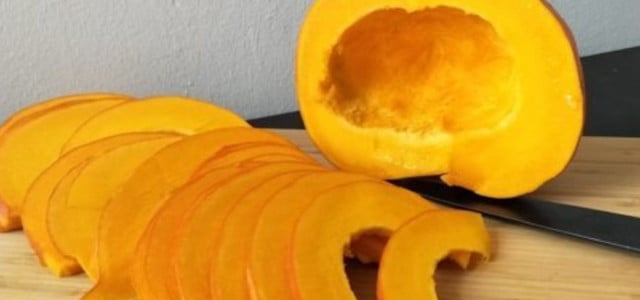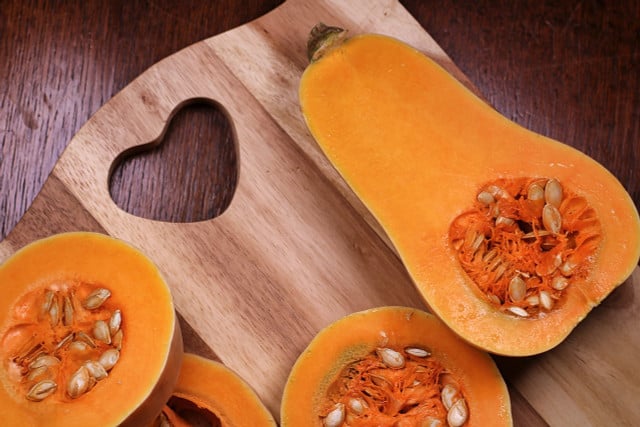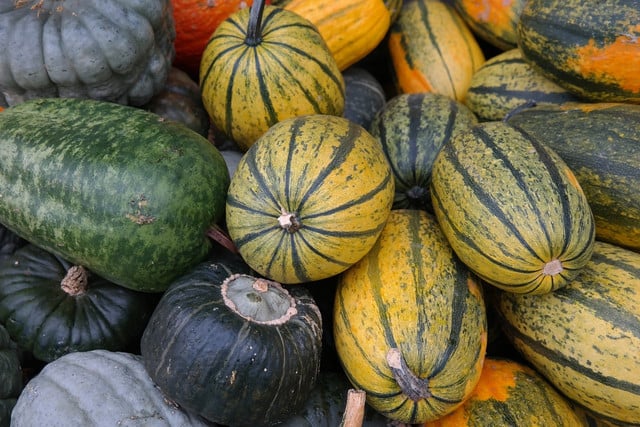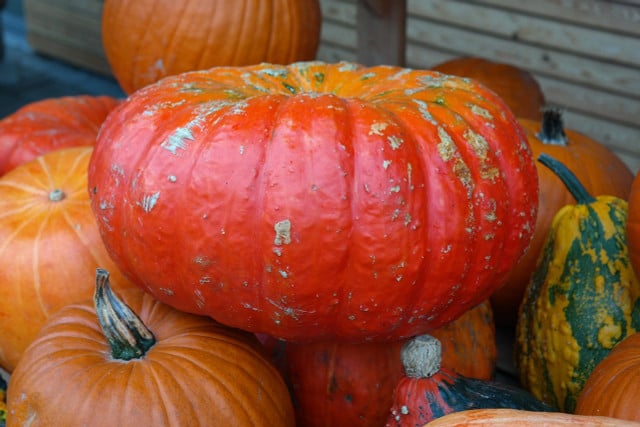
The calories and nutritional values of pumpkin vary considerably depending on the type of pumpkin. Here you can find information on the most popular pumpkins.
Many different dishes can be prepared from pumpkins, from oven-baked pumpkins to grilled pumpkins to a warming pumpkin soup on cold days. We’ll show you which types of pumpkin you can use and what nutritional values they have.
Hokkaido pumpkin: calories and nutritional values
The Hokkaido is probably the most popular pumpkin. It is ideal for all dishes. With 28 kilocalories per 100 grams, the pumpkin is also very low in calories.
The following nutritional values apply per 100 grams:
- Carbohydrates: 6 g
- Protein: 0.65 g
- Fat: 0.17 g
- Dietary fiber: 0.69 g
Nutritional values and calories of butternut squash

(Photo: CC0 / Pixabay / webdesignnewcastle)
The butternut squash tastes sweeter and a little nutty. 100 grams of the squash contains 45 kilocalories.
The butternut also has the following nutritional values:
- Carbohydrates: 11.7 g
- Protein: 1 g
- Fat: 0.1 g
- Dietary fiber: 2 g
Spaghetti squash: nutritional values at a glance

(Photo: CC0 / Pixabay / Hans)
The spaghetti squash is known for its fibrous flesh that looks like spaghetti. This squash is low in calories – namely 31 kcal per 100 grams.
The nutritional values of spaghetti squash:
- Carbohydrates: 6.91 g
- Protein: 0.64 g
- Fat: 0.57 g
- Dietary fiber: 1.5 g
Nutritional values of butternut squash
The butternut squash is also called musk pumpkin and is very spicy. This makes it ideal for pumpkin chutneys and pumpkin soup. The butternut squash is also low in calories. It contains 28 kilocalories per 100 grams.
The butternut squash has the following nutritional values:
- Carbohydrates: 6 g
- Protein: 0.65 g
- Fat: 0.17 g
- Dietary fiber: 0.69 g
Red Hundred Pound Pumpkin: Calories and Nutritional Values

(Photo: CC0 / Pixabay / Hans)
The red Zentner is actually a Halloween pumpkin: on October 31st you can carve a face into the pumpkin. But you can eat the flesh. 100 grams contain 26 calories.
Nutritional values of the red centner pumpkin:
- Carbohydrates: 6.5 g
- Protein: 1 g
- Fat: 0.1 g
- Dietary fiber: 0.5 g
Read more at Utopia:
- Planting pumpkins: cultivation, care and harvest – this is how it works
- Make your own pumpkin jam: a quick recipe
- Freezing pumpkin: what you should pay attention to
Edited by Melanie Grünauer
** marked with ** or orange underlined Links to sources are sometimes affiliate links: If you buy here, you are actively supporting Techzle\.com, because we then receive a small part of the sales proceeds. More information.